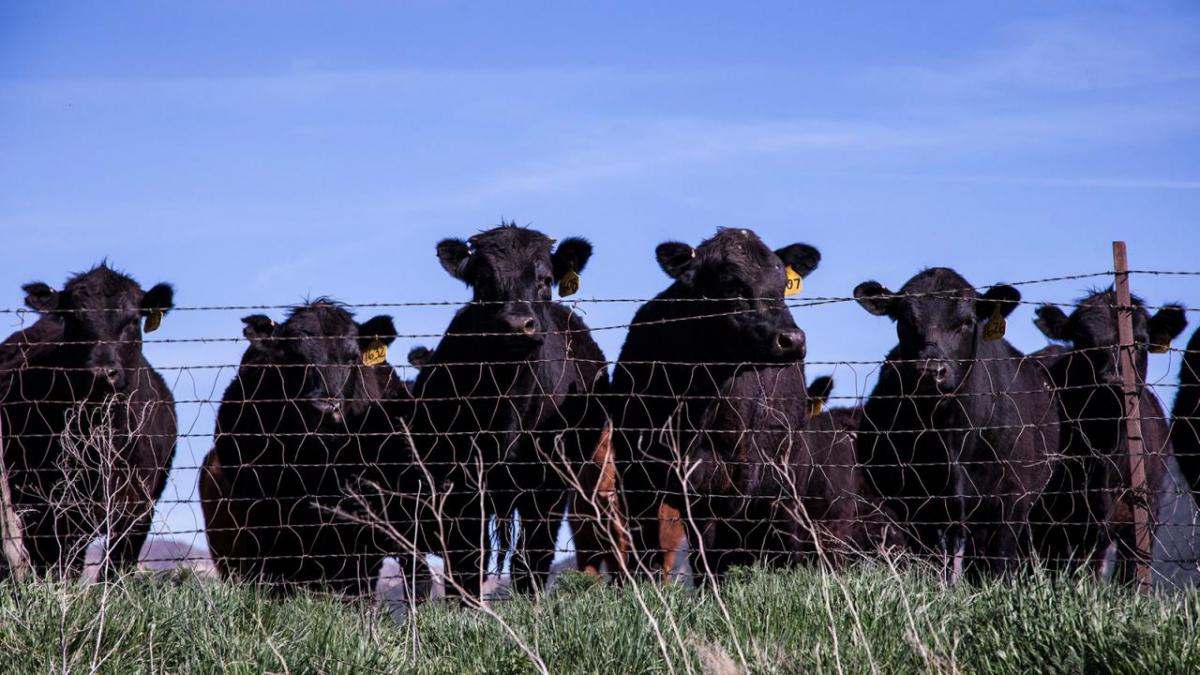This article was first published by the Nebraska Cattleman magazine.
The United States Department of Agriculture (USDA) National Agricultural Statistics Service (NASS) releases the Cattle Inventory report twice a year, in January and July. Each report provides estimates on the number of cattle and calves, beef cows and heifers that have calved, heifers and steers weighing 500 lbs. or more, calf crop, and cattle on feed. The primary difference between reports is that the January release has state specific cattle numbers whereas the July release reports US aggregate numbers. The cold winter, delayed planting, Holcomb fire, and volatile cattle prices has made for an interesting dynamic for the upcoming release of the January Cattle Inventory report. In particular, the number of beef cows and heifers that have calved and heifers 500 lbs. or more held for beef cow replacement should signal where we are in the cattle cycle. Prior to its release, several other reports provide some direction, but not magnitude, on what this report might look like. I review a few of these in what follows.
Cattle Slaughter
The United States Department of Agriculture (USDA) National Agricultural Statistics Service (NASS) release beef cow, steer, and heifer actual slaughter numbers each week. Beef cow slaughter is one of the primary indicators of cattle available to calve in Spring or Fall. As slaughter numbers increase the calf crop and future feeder cattle supplies will decrease. Figure 1 displays the 2019, 2018, and the five-year average (2013-2017). Until the middle of September, 2019 beef cow slaughter closely followed 2018 with the exception of higher slaughter in the early spring. However, since the middle of September beef cow slaughter has been much higher than 2018 and even higher than the historical five-year average. It’s worth noting that the cattle industry entered a new cattle cycle beginning in 2014 so as the cattle industry has expanded, we should see relatively lower beef cow slaughter.
Other reports have indicated that the hard winter lowered cow and heifer body condition scores leading to more open pregnancies. This coupled with less than ideal forage supply and quality have left producers deciding whether to retain less than ideal open cows through the winter. This uncharacteristic supply of cows on the market has shown up in Nebraska beef cow prices which have been lower than usual. While beef cow slaughter has been increasing, total cattle slaughter has closely tracked 2018, even during the Holcomb fire. The breakdown between steers and heifers slaughtered is particularly insightful – steers have been at or lower than 2018 or the five-year average in 2019 whereas heifers have been consistently higher than both 2018 and the five-year average in 2019. This would indicate there is some feedlot pull for heifers in be placed.
Heifer and Steer Placements
Cattle slaughtered today were placed three to six months ago so looking at current slaughter numbers only reveals producers past decisions. However, each quarter the United States Department of Agriculture (USDA) National Agricultural Statistics Service (NASS) releases an enhanced version of the Cattle on Feed report that breaks down placements by steers and heifers. The percent of steers to heifers indicates if relatively more heifers are being sent to feedlots lowering the breeding herd and supply of feeder cattle available. In other words, it can give some idea of what the future breading herd will look like in the coming years. In 2019, 38% of cattle placed in Nebraska were heifers exactly in line with the US average but the highest percent since 2012. Texas heifer placements were slightly higher with 39%, also the highest since 2012, and Kansas heifer placements were 46% in line with their 5 yr. avg. Similar trends follow for most of the seven major cattle feeding states including Colorado and Iowa. Across the seven major cattle feeding states the percent of heifers placed has been increasing year over year since 2015 indicating at least some long-term preference towards placing heifers. The next quarterly report is released in January which should indicate whether this trend is projected to continue in the near term.
Implications of Slaughter and Placement Decisions
If heifer placements continue to rise along with beef cow and slaughter numbers, this will reduce the breeding herd in the short term and ultimately the feeder cattle supply in subsequent years. This reduction in supply, given a steady to slightly increasing beef demand, should be translated back into higher fed and feeder cattle prices in 2020 and 2021. These findings are supported by the 10-year projections put out by the United States Department of Agriculture Office of the Chief Economist (USDA-OCE) each fall. The USDA-OCE is projecting the Oklahoma City feeder steer price to be $140/cwt in 2020 and $151/cwt in 2021 and the 5-area fed steer price to be $116/cwt in 2019 and $121/cwt. in 2021. How accurate these projections depend in part on the 2020 January Cattle Inventory report.
Looking Forward
The July 2019 Cattle Inventory report suggested that current beef production levels and cattle prices were relatively stable and were projected to remain that way unless something provoked a new direction. The fire at the Holcomb packing plant was a significant shock that may have initiated some of that change. While that may have been the catalyst, the long winter, delayed planting, poor hay conditions, open cattle, depressed to volatile calf prices have all been contributing factors in nationwide movements in cattle slaughter and the type of cattle placed in feedlots. The January 2020 Cattle Inventory report will definitely paint a more clear picture on the breading herd and future feeder cattle supplies look like in 2020 and beyond.
Link to Reports
The Cattle Inventory report is found at https://usda.library.cornell.edu/concern/publications/h702q636h?locale=en
Weekly Beef Cow Slaughter is found at https://www.ams.usda.gov/mnreports/sj_ls711.txt
USDA-OCE 10 year projections at https://www.usda.gov/oce/commodity/projections/
Figure 1. Beef Cow Slaughter.

Elliott Dennis
Assistant Professor of Livestock Marketing and Risk Management
Department of Agricultural Economics
elliott.dennis@unl.edu
